Flowers That Start With N – The list of stunning and eye-catching flowers that all begin with the letter N is provided below. You’re sure to find something you love on this list, whether you’re looking to add a splash of color to your garden or simply want to learn about some new plant species!
Flowers That Start With N – List Of Flowers That Name Starts With the Letter ‘N’
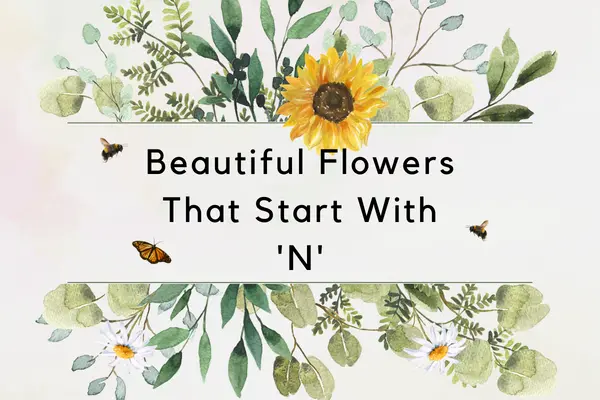
Narcissus
The majority of the 40 different species of fragrant plants that make up the Narcissus genus are native to Europe. These plants, like the jonquil, poet’s narcissus, and others that grow from bulbs are frequently used as attractive ornaments in gardens.

Despite being poisonous, these plants’ bulbs have been used historically for emetic and cathartic purposes. Today, oils extracted from jonquil flowers are frequently used as components in various perfumes.
In the spring, a wide variety of flowering plant species appear from bulbs. Depending on the species, their flattened leaves can grow from the plant’s base to a height of 5 cm (2 inches) to 1.2 meters (4 feet).
Each yellow, white, or pink bloom has a center crown that can have a variety of shapes, from a trumpet-like shape, as in the daffodil, to a ring-like cup, as in the poet’s narcissus. Some species naturally hybridize, and horticulturists have also produced a large number of hybrids by breeding several species. These hybrids frequently have gorgeous flowers.
Nasturtiums
Nasturtium is a plant with numerous advantages. In addition to being attractive to look at, it also works well as a trap crop in companion planting.

This implies that it can help deter plant pests like aphids from damaging more expensive vegetables. Nasturtium also promotes the growth of the following plants: bean, broccoli, cabbage, cucumber, kale, melon, pumpkin, and radish.
Not only are pests attracted to nasturtiums, but they are also a favorite of pollinators like bees, butterflies, and hummingbirds. Their pretty fragrance makes them a good choice for cut-flower gardens.
Nasturtiums are annual plants in most areas, but they may be perennial in frost-free zones.
Nemesia
The Nemesia genus contains more than 50 species, but just a few are well-liked garden plants. N. strumosa and N. caerulea are the two most popular species.
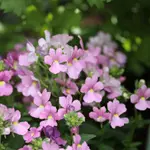
True annual N. strumous grows up to one foot tall and has one-inch blue or white blooms. N. caerulea is a fragile perennial that grows up to two feet tall and bears one-half-inch blooms in the colors purple, pink, blue, and white.
The lance-shaped leaves that line the stem of the Nemesia plant are its most distinctive feature. They appear in pairs. The two-lipped, tubular flowers of the nemesia plant resemble snapdragons very well. The Nemesia plant can produce so many flowers if the weather stays mild that the foliage is nearly completely hidden from spring until fall.
Nemophila
An annual herb genus called Nemophila belongs to the Boraginaceae family. Most species have bell-shaped blue or white flowers. Nemophila menziesii, a species of baby blue-eyes native to North America, frequently blooms prominently in California’s moist woodland borders.
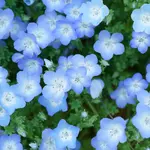
The plant’s five-lobed, wheel-shaped flowers can be blue, white, or have blue veins running through them. The flowers can reach a width of 4 cm (1.5 inches). The plant itself can reach a height of around 50 cm and can occasionally creep along the ground. Its leaves are divided into five to nine lobes.
Nepeta
Easy-to-grow Nepeta plants, which grow catmint, are part of the mint family, which also includes catnip (Nepeta cataria). They seem delicate and lacy, have mildly scented gray-green foliage, and have minimal pests or other issues. Their swaying foliage is covered in spikes of white, pink, or lavender-blue flowers in the early summer, and these flowers may bloom again later in the season.
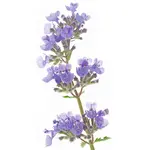
Anyone wishing to spice up their garden with some taste will love catmint! The majority of catmint types have a wonderful, agreeable perfume that makes them perfect for edging planting areas or lining walks. Some taller-growing cultivars, like “Six Hills Giant,” have an upright growth pattern, though.
Like many fragrant plants, catmint is also deer-resistant, so you won’t have to be concerned about bothersome animals spoiling your garden. Additionally, it is a quick-growing plant that can be planted from early spring to late summer in most climates.
Nerine
Late fall sees the blooming of nerines, lily-like blooms that come in pink and scarlet hues. They create excellent cut flowers and look lovely in borders and containers. Nerine bowdenii is hardy in warmer parts of the UK, unlike other nerines, which are fragile and require greenhouse cultivation.
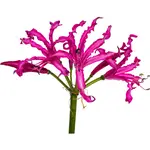
The best time to plant nerine bulbs is in the spring. They require poor, drained soil with direct sunlight. A wall facing south or west is also recommended for enhanced security. Trim the plant back after it blooms and tidy up the foliage. Although Nerine bowdenii needs to be brought indoors in the fall, it is hardy in southern regions. Replace with a thick layer of mulch.
Nicotiana
Australia, North America, and tropical South America are the origins of the 67 Nicotiana species. All of them have trumpet- or tubular-shaped blooms that bloom primarily at dusk and in the evening.
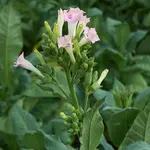
They can be utilized in borders, forest gardens, containers, or as specimen or bedding plants. The range of heights is under one foot to over ten feet. Some of these species give off a strong scent.
These gorgeous, long-blooming plants have trumpet-shaped flowers that come in a range of hues, including green, white, red, and pastel shades. Some species have gorgeous foliage as well. They make lovely additions to any garden and are not overly difficult to grow from seed. The hairy foliage should be avoided, though, as it could irritate your skin.
Nierembergia
Nierembergia, often known as cupflower, is a perennial that blooms for a long time and are ideal for patios and compact areas. Species-specific sizes vary, but all plants feature stiff, finely textured leaves that emerge from several stems.
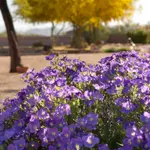
From early summer to late fall, the plants are covered in blue, purple, or white flowers that resemble saucer-shaped stars with yellow centers. Even in the most direct sunshine, the blooms are reputed to maintain their colour.
Nigella
The leaf of Nigella (Nigella damascena), which generates a mist surrounding the blossoms, gives rise to the nickname “love-in-a-mist.” When in bloom, N. Damascena has a distinctive swirl of airy bracts and delicate foliage that makes it easy to identify.
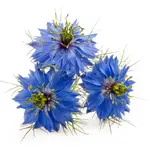
Damascena plants have interesting seed pods, ferny leaves, and fluffy blooms. Although the brilliant blue-blossom type is the most well-known, there are many varieties of love-in-a-mist that bloom in purple, pink, and white.
These flowers can be planted in the spring or the fall, and both times will result in gorgeous blooms. These adaptive plants start blooming in late spring and reach heights of almost two feet. You’ll enjoy flowers all the way through September because they self-seed!
Nolana
At first sight, Nolana might be confused for morning glory, but it is actually a different species that is also known as the Chilean bellflower.

This creeping plant, which has blue or violet blossoms, makes an excellent ground cover or flowery spiller in a container. In colder climates, it is annual, while in warmer climates, it is perennial.
Have you ever considered this plant to be a member of the nightshade family? You might be familiar with nightshades if you’ve ever eaten peppers, potatoes, or tomatoes. However, this specific variety of nightshade is renowned for its stunning blossoms, which are present all summer long.